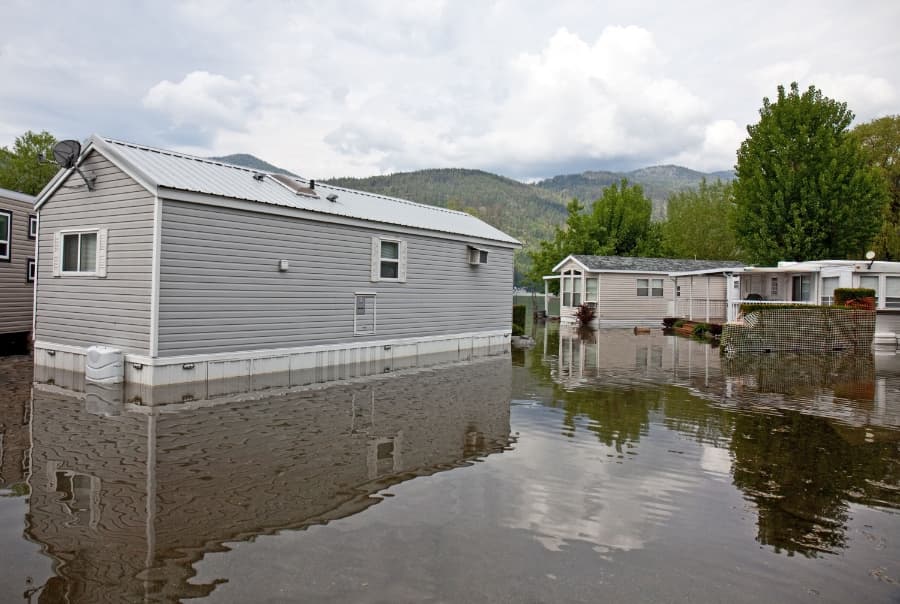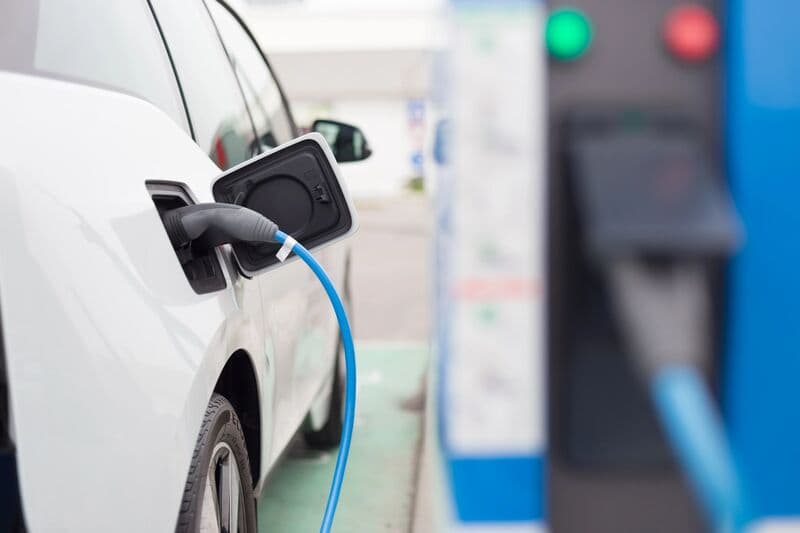Climate Action
Annual State of Safety 2022
Preparing for Extreme Weather and the Future of Technical Safety
Extreme weather and climate change continue to impact our communities in BC. As a safety regulator, we play an important role in addressing emerging risks related to climate change, educating safety partners, and removing barriers to the adoption of low-carbon technologies and systems.
Studying Risks Across BC
In 2022, climate action was once again a top priority for our organization.
Our Climate Action and Sustainability team conducted research into the emerging safety risks created or exacerbated by climate change across BC's safety system.

Our Climate Hazard Inventory
Through our Climate Resiliency Program, we identified hazards to technical equipment and systems by creating a Climate Hazard Inventory for the following regulated technologies:
- electrical and gas systems;
- boilers,
- pressure vessels and refrigeration systems; and
- elevating devices.
This inventory, which will be integrated into Technical Safety BC’s regular risk oversight model, is informed by expert judgement, external datasets, and climate change and/or low-carbon technology related incidents reported to Technical Safety BC.
Throughout 2022, we responded directly to multiple incidents across the province related to extreme weather events, including elevated water levels, extreme cold, storms, and rising temperatures.
.jpg&w=3840&q=75)
Gas Lines and Extreme Weather: An Emerging Risk
Weather interactions with technical equipment can be dangerous, particularly as severe conditions become more frequent. In addition to temperature and other extremes, climate change is resulting in the increased occurrence and intensity of storms.
In at least three separate incidents reported to Technical Safety BC in 2022, lightning strikes caused damage to gas lines, resulting in gas leaks and, in one documented case, a fire.
Investigating the Unexpected Consequences of Extreme Heat and Cold
Extreme weather is creating unfamiliar environmental conditions in many regions across BC. This has caused some residents to seek new ways to keep their homes comfortable — however, the interaction of technologies and energy systems within the home can lead to unexpected consequences.
In 100 Mile House, BC, a family living in a mobile home had a natural gas fireplace. During the summer months, the family used a single pipe air conditioner unit that exhausted warm room air through a sealed window opening to cool down the living room. Unfortunately, the constant removal of air from the portable air conditioner depressurized the space, drawing the products of combustion from the fireplace back into the room. Unbeknownst to the family, the pilot of the fireplace was malfunctioning, and high levels of carbon monoxide were brought into the home. While not fatal, the incident resulted in two occupants requiring hospital treatment for carbon monoxide poisoning.
"Through our Climate Hazard Inventory, we are systematically identifying potential safety hazards, with an aim to reduce safety risks and hazards."
In 2022, we also saw an increased number of incidents that were the result of extreme cold and improper use of gas heating devices. In one incident in Charlie Lake, BC, two propane cylinders were brought inside to assist with heating a residence during extreme cold weather (-37C). A leak from one of the cylinders caused an explosion and subsequent fire. One person suffered second degree burns.
These incidents highlight some of the hazards resulting from climate and other contributing factors, like behaviour, as British Columbians adapt to our changing environment. Through our Climate Hazard Inventory, we are systematically identifying potential safety hazards, with an aim to reduce safety risks and hazards through all of our regular risk control activities, including education, communication, and enforcement.
Overseeing the Safety of Low-Carbon Technologies
As the Provincial Government moves towards decarbonizing our energy systems, we are seeing a rise in the adoption of low-carbon technologies like hydrogen, electric vehicle chargers and energy management systems, heat pumps, and building energy management systems.
However, the emergence of any new technology can result in unmanaged safety risk.

Innovative Technologies, Emerging Risks
Through our low-carbon technology research, we are continually investigating these innovative technologies to understand opportunities to proactively address any emerging risks and enable their safe and expedient adoption.
In 2022, we investigated three incidents related to unpermitted installations of electric vehicle chargers. In one incident in Mission, BC, the addition of an electrical vehicle charging outlet in a home garage caused a fire.
Our teams also investigated incidents stemming from unsafe and overloaded electrical systems and components added to systems as a result of new climate extremes, including heat pumps. In one incident on Saltspring Island, BC, the breaker for a heat pump branch circuit overheated and melted.
Learning from these incident investigations helps us to understand potential safety hazards related to emerging technologies, ultimately allowing us to proactively manage safety risk, and contribute to the safe and expedient adoption of technologies that reduce greenhouse gas emissions.
Looking Ahead to 2023
As our province continues to mitigate and adapt to the emerging safety risks brought on by climate change, climate action will remain at the forefront of our work. We will continue to support the Province’s CleanBC plan and Climate Preparedness and Adaptation strategy by training our safety officers and clients on emerging low-carbon technologies and extreme weather hazards that impact all British Columbians.
In 2023 and beyond, our focus is on integrating our understanding of climate hazards and emerging low-carbon technologies into our risk oversight model.
- We will continue to develop educational materials for our safety officers and clients on emerging low-carbon technologies and on climate hazards.
- We will prioritize building partnerships with other organizations to clarify requirements for emerging technologies to enable safe and expedient adoption.
- Our public safety campaigns will include climate safety information.
- We will share findings from, and collect feedback on, our Climate Hazard Inventory with clients and safety partners.
- Climate related risks will be integrated into our safety system risk register, which will enable us to understand how climate change contributes to safety risks.
- We will partner with communities to find ways to proactively manage safety of technical equipment before, during, and after extreme weather events.
As new and unexpected hazards emerge as a result extreme weather and related factors, we will continue to adapt to best support our clients and the province in preparing for a changing climate, new technologies, and building a future of safe technical systems - in any environment.
"As new and unexpected hazards emerge as a result extreme weather and related factors, we will continue to adapt to best support our clients and the province."
You May Be Interested In
Building Confidence
We identify risks and increase safety by investigating and auditing companies without proper licenses and qualifications.
Learn MoreSafety Engagement
We provide technical training and education to support our partners. We also work to influence people in the safety system to make safety-minded decisions.
Learn MoreData and Trends
Learn about safety trends, analysis and emerging risks for each of the technologies TSBC oversees.
Learn More